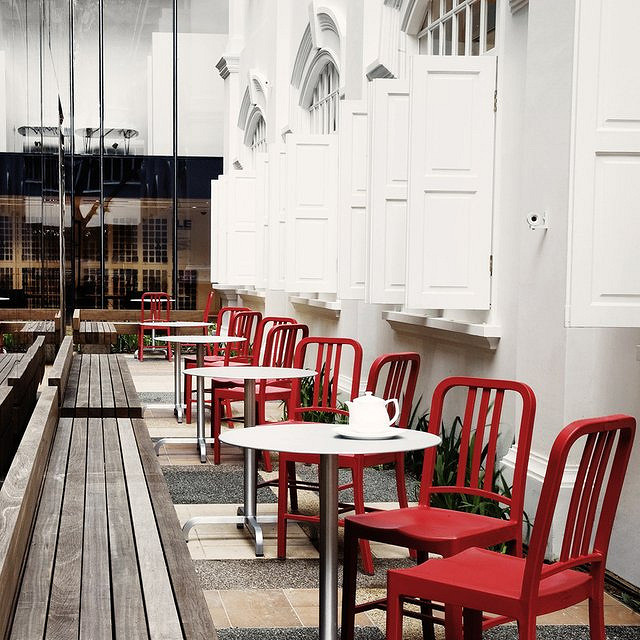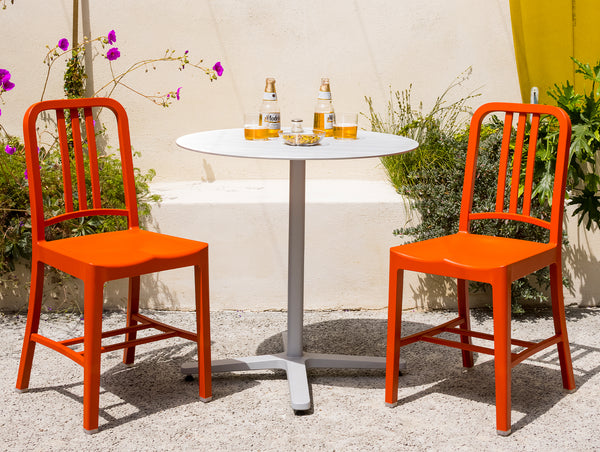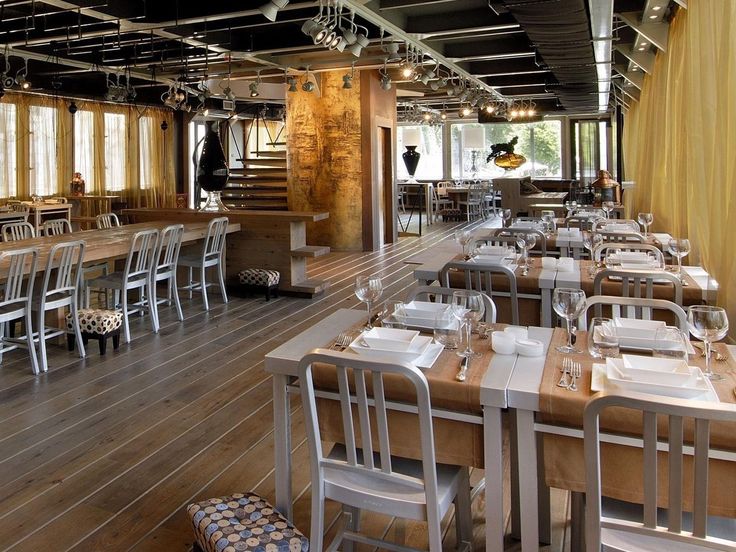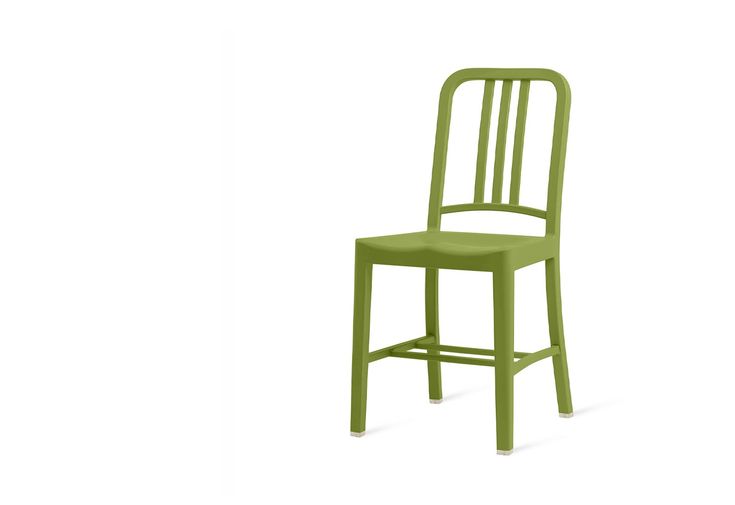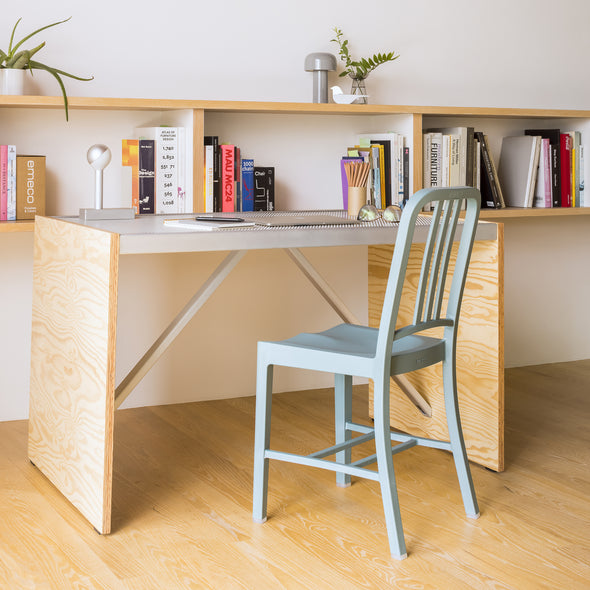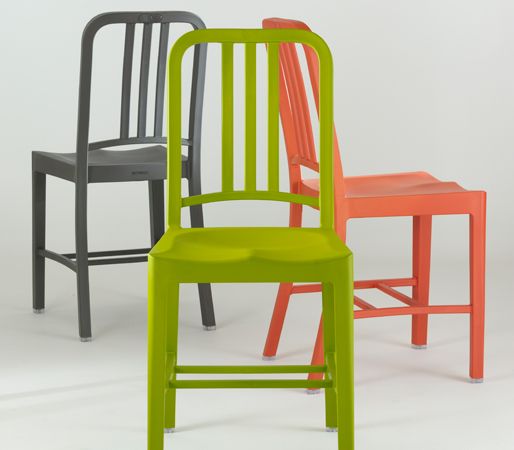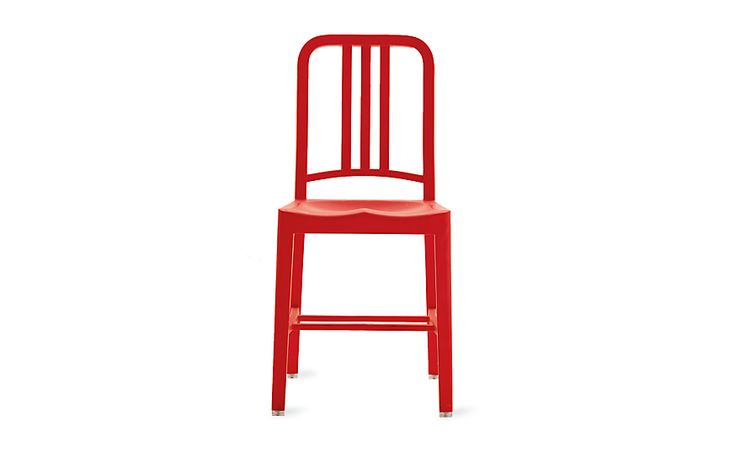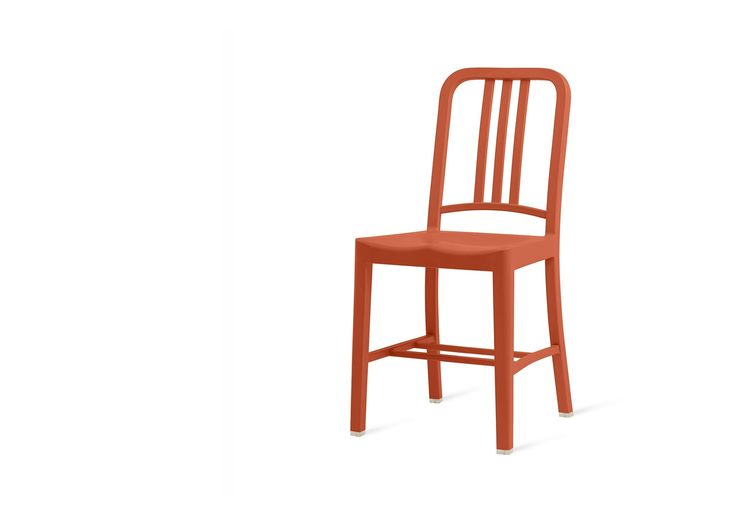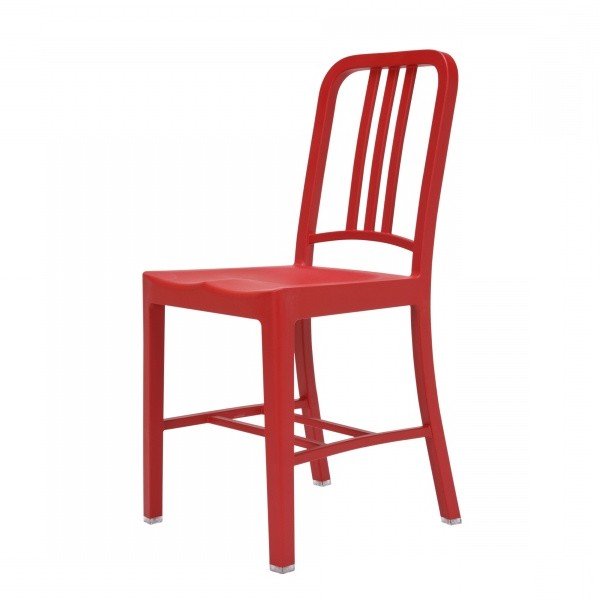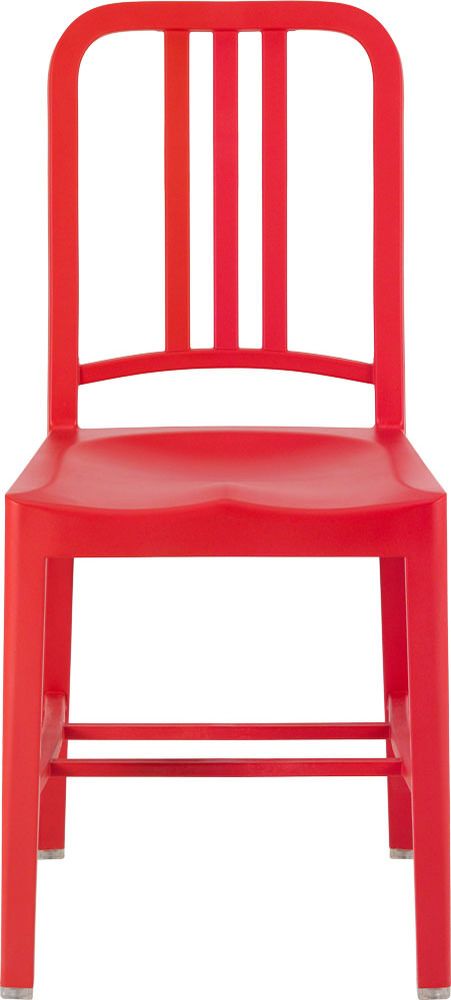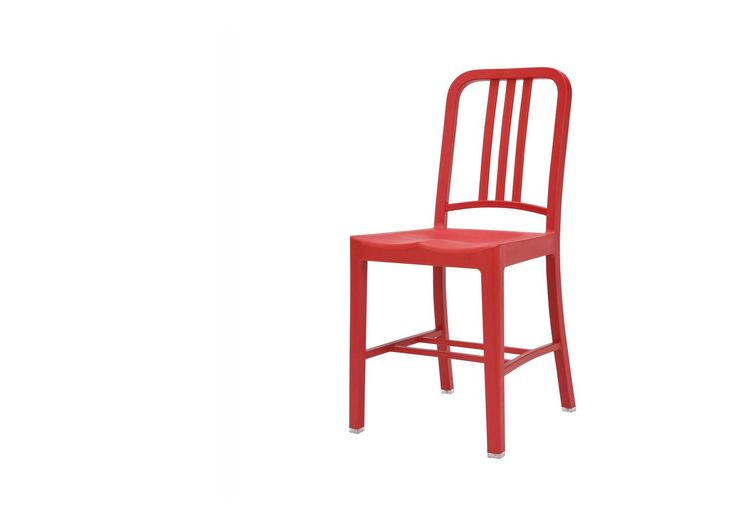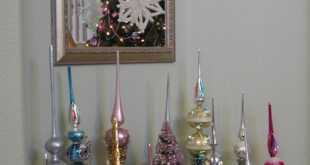The 111 Navy Chair is the result of the very successful, if unusual, collaboration between two companies that, at first glance, have nothing in common – The Electrical Machine and Equipment Company, a small designer furniture manufacturer from Hanover, Pennsylvania, and The Coca-Cola Company, a worldwide well-known soft drink company worth several billion US dollars. The two companies have teamed up to create the plastic descendant of Emeco’s most famous product – the iconic 1006 Navy Chair.
Story
Although the origins of the famous Ten-O-Six date back more than seven decades, its plastic variant was only created a few years ago. The story began in 2006 when Coca-Cola was looking for ways to recycle the plastic bottles used to package its products. A key role in the team-up process between the two companies was played by Paola Antonelli, Senior Curator at the Museum of Modern Art in New York, who recommended Emeco as a potential partner due to its reputation as a company that values the sustainability and longevity of its products designed for the project to protect the natural environment by reducing the amount of waste were crucial.
While the company’s main purpose sounds relatively simple – to make a chair out of recycled plastic bottles – the research and testing took almost four years and required the involvement of the world’s largest chemical company – BASF – which helped develop the injection molding technology needed to make the Landfill salvaged plastic is suitable. The finished chair, named 111 Navy Chair, premiered at the Milan Furniture Fair in 2010.
design
When looking at the 111 Navy Chair, its affinity is immediately apparent. The outward appearance of the chair is identical to its famous ancestor – the 1006 Navy Chair, the design of which was forged in 1944 in the heat of World War II by Wilton C. Dinges in response to the US Navy’s demand for lightweight construction. High strength warship furniture. The main principle of the chair was to withstand the severe, salty environment of US Navy ships. The design of the chair was not about style or chic. It was for a purpose. It had to take a while. The simplified, clear form, which is primarily determined by its function, is aesthetic and elegant at the same time. The fact that the chair’s design hasn’t changed in over 70 years of manufacture is irrefutable proof that the Ten-O-Six is a true icon of American industrial design. The chair consists of 12 aluminum parts, mostly curved profiles with a rectangular cross-section and rounded corners, which are welded together. serves as the main structural component of the chair. The seat shell is derriere shaped to make the chair more comfortable. The outward appearance of the chair has been passed on unchanged to its sculptural descendants. Although the 111 Navy Chair looks just like its sturdy “grandpa”, the materials and manufacturing process used to make it are fundamentally different. Instead of rolled and forged aluminum, the 111 Navy Chair is made from rPET (recycled polyethylene terephthalate), which accounts for 65% of the chair’s weight. The remaining 35% is glass fiber added to improve structural strength. The chair has a satin finish, which makes the chair less prone to scratches. It is available in 6 different colors: red, grass green, snow, fire grey, anthracite and persimmon.
